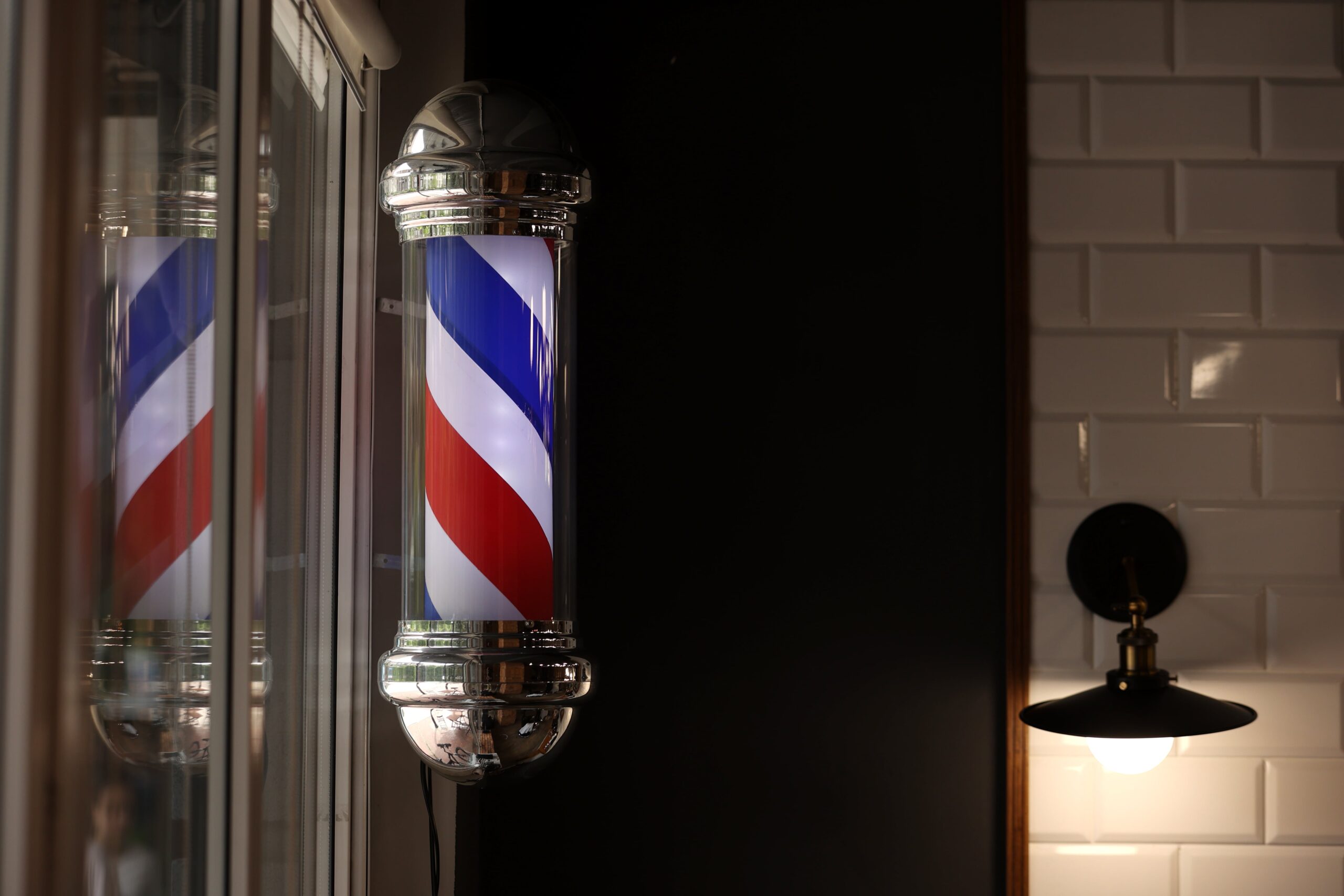When you picture a classic barber shop, a few things probably come to mind — crisp capes, the satisfying sound of clippers, and, of course, that unmistakable red- and blue-striped barber pole spinning outside. And while that cheerful barber pole might seem quaint today, the history of the barber pole is, well . . . a bit darker.
The Surprisingly Strange History of the Barber Pole
The barber pole’s iconic red, white, and blue color scheme can be traced back to the Middle Ages, when professional barbers played a very different role in society compared to today. Known as barber-surgeons, the earliest barbers offered shaves and haircuts — but they also performed surgical operations, pulled teeth, set broken bones, and dressed wounds. Barber-surgeons also offered bloodletting, a (thankfully) debunked procedure that promised to heal the body by releasing “bad” blood. That’s where the pole comes in.
Historians believe the barber pole itself symbolizes a wooden rod that patients held during the bloodletting procedure. When the patient gripped the rod, his or her veins stood out more prominently. (Think of the way you might squeeze a ball during a modern-day blood sampling procedure to make your veins stand out.) As for the pole’s color scheme, legend has it that the red represents blood, while the white represents the bandages used after bloodletting. Unfortunately, there’s very little definitive evidence to back that claim up, so we’re left to wonder.
Modern Barber Poles
Fast forward to 1540, when the United Barber Surgeon’s Company was formed in England. A conflict with the Royal College of Physicians — the more reputable doctors of the day — ensued. Eventually, barber-surgeons were required to place a striped pole outside their places of business. The striped pole distinguished barber-surgeons from physicians, allowing any potential patients to make an informed choice before paying for a procedure. The tradition continued for centuries, with the striped barber pole enduring as an iconic symbol long after barbers stopped practicing medicine.
Keeping the Tradition Alive
The traditional barber shop still had a strong presence in the United States during the first half of the twentieth century; in fact, before 1950, there were four barber pole manufacturers in the United States to keep up with demand. But by the second half of the century, William Marvy of St. Paul, Minnesota, was the only barber pole manufacturer in North America. Why? It’s hard to say, though it might have something to do with changing hair trends. (Think about the impact of the Beatles on men’s hairstyles, for example — out with the classic shave, in with the edgy shag.) Even so, the tradition of traditional barber poles is still alive in classic shops around the country. In fact, multiple states in the U.S. have restrictions that only allow licensed barber shops to display the poles outside of their shops — no one else — making the pole something of a status symbol.
Thankfully, we’ve come a long way from the surprisingly macabre history of the barber pole. Still, the classic striped pole will always be a mark of our proud tradition of barbering. As traditional barbering returns to the spotlight in shops like ours, we wouldn’t be surprised if you see more and more poles popping up in your neighborhood.
If you’re looking for that classic, community-oriented barbershop feel, look no further than Hudson / Hawk Barber & Shop. Since launching in 2013, we’ve become the go-to barbershop in numerous Midwestern communities across Missouri, Arkansas, Kansas, and Oklahoma. We offer community, conversation, and, of course, quality haircuts. Give us a call if you’d like to schedule an appointment.


